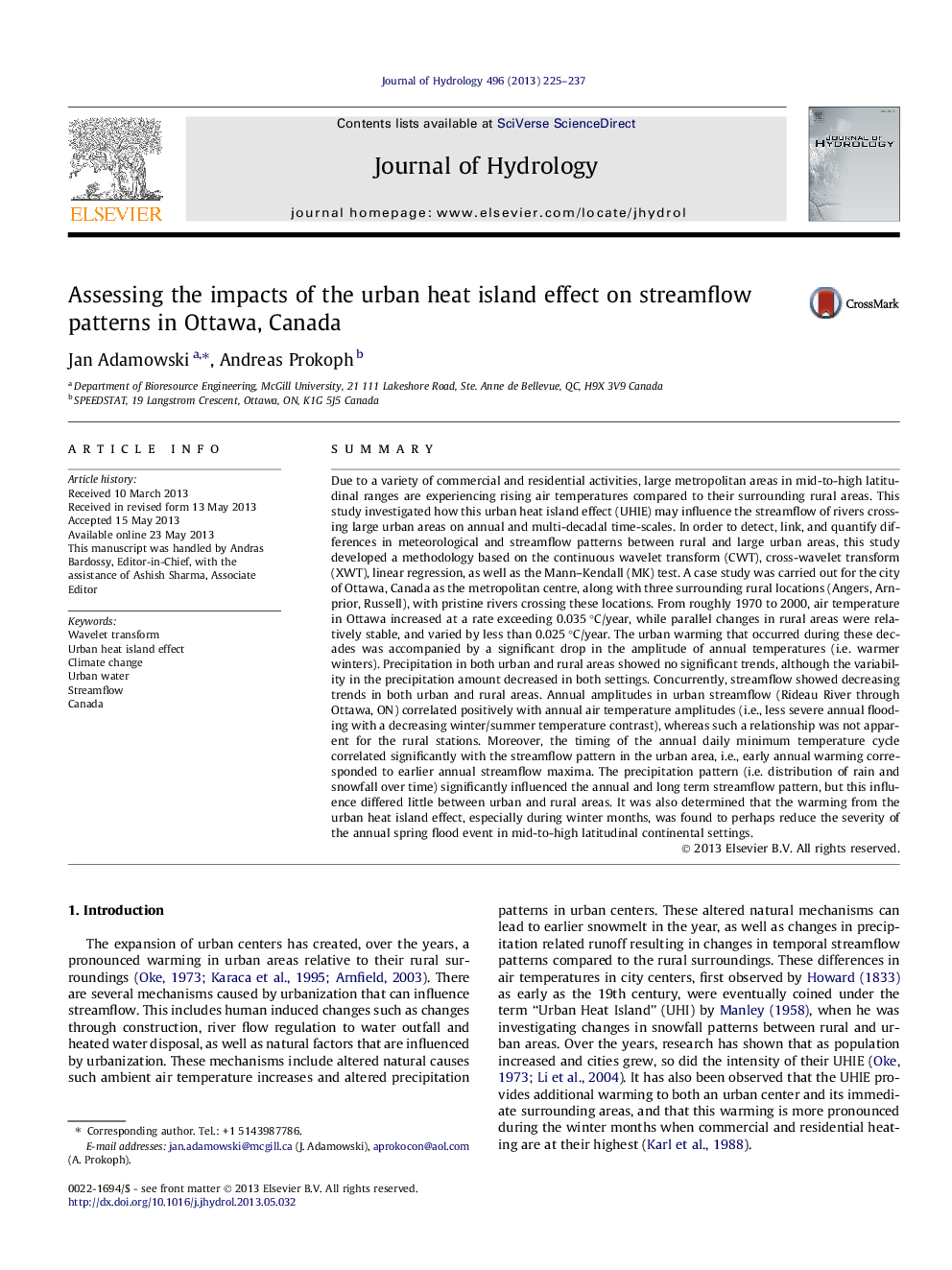| کد مقاله | کد نشریه | سال انتشار | مقاله انگلیسی | نسخه تمام متن |
|---|---|---|---|---|
| 6413749 | 1629952 | 2013 | 13 صفحه PDF | دانلود رایگان |
- Explored urban heat island effect on streamflows.
- Used wavelet and cross wavelet transform and Mann-Kendall test.
- Case study in Ottawa and three surrounding rural locations.
- Warming from urban heat island effect reduces severity of spring floods.
SummaryDue to a variety of commercial and residential activities, large metropolitan areas in mid-to-high latitudinal ranges are experiencing rising air temperatures compared to their surrounding rural areas. This study investigated how this urban heat island effect (UHIE) may influence the streamflow of rivers crossing large urban areas on annual and multi-decadal time-scales. In order to detect, link, and quantify differences in meteorological and streamflow patterns between rural and large urban areas, this study developed a methodology based on the continuous wavelet transform (CWT), cross-wavelet transform (XWT), linear regression, as well as the Mann-Kendall (MK) test. A case study was carried out for the city of Ottawa, Canada as the metropolitan centre, along with three surrounding rural locations (Angers, Arnprior, Russell), with pristine rivers crossing these locations. From roughly 1970 to 2000, air temperature in Ottawa increased at a rate exceeding 0.035 °C/year, while parallel changes in rural areas were relatively stable, and varied by less than 0.025 °C/year. The urban warming that occurred during these decades was accompanied by a significant drop in the amplitude of annual temperatures (i.e. warmer winters). Precipitation in both urban and rural areas showed no significant trends, although the variability in the precipitation amount decreased in both settings. Concurrently, streamflow showed decreasing trends in both urban and rural areas. Annual amplitudes in urban streamflow (Rideau River through Ottawa, ON) correlated positively with annual air temperature amplitudes (i.e., less severe annual flooding with a decreasing winter/summer temperature contrast), whereas such a relationship was not apparent for the rural stations. Moreover, the timing of the annual daily minimum temperature cycle correlated significantly with the streamflow pattern in the urban area, i.e., early annual warming corresponded to earlier annual streamflow maxima. The precipitation pattern (i.e. distribution of rain and snowfall over time) significantly influenced the annual and long term streamflow pattern, but this influence differed little between urban and rural areas. It was also determined that the warming from the urban heat island effect, especially during winter months, was found to perhaps reduce the severity of the annual spring flood event in mid-to-high latitudinal continental settings.
Journal: Journal of Hydrology - Volume 496, 24 July 2013, Pages 225-237
